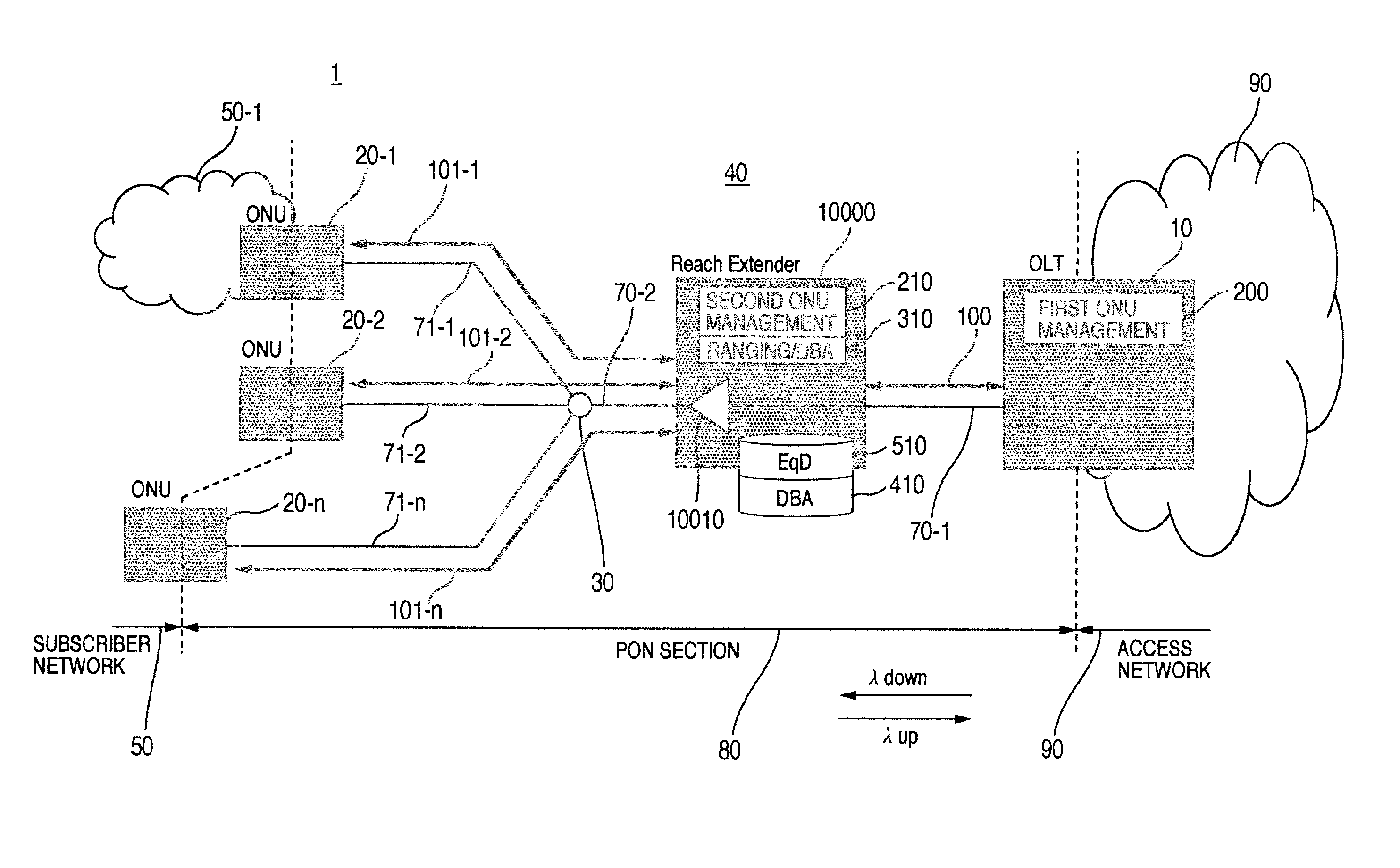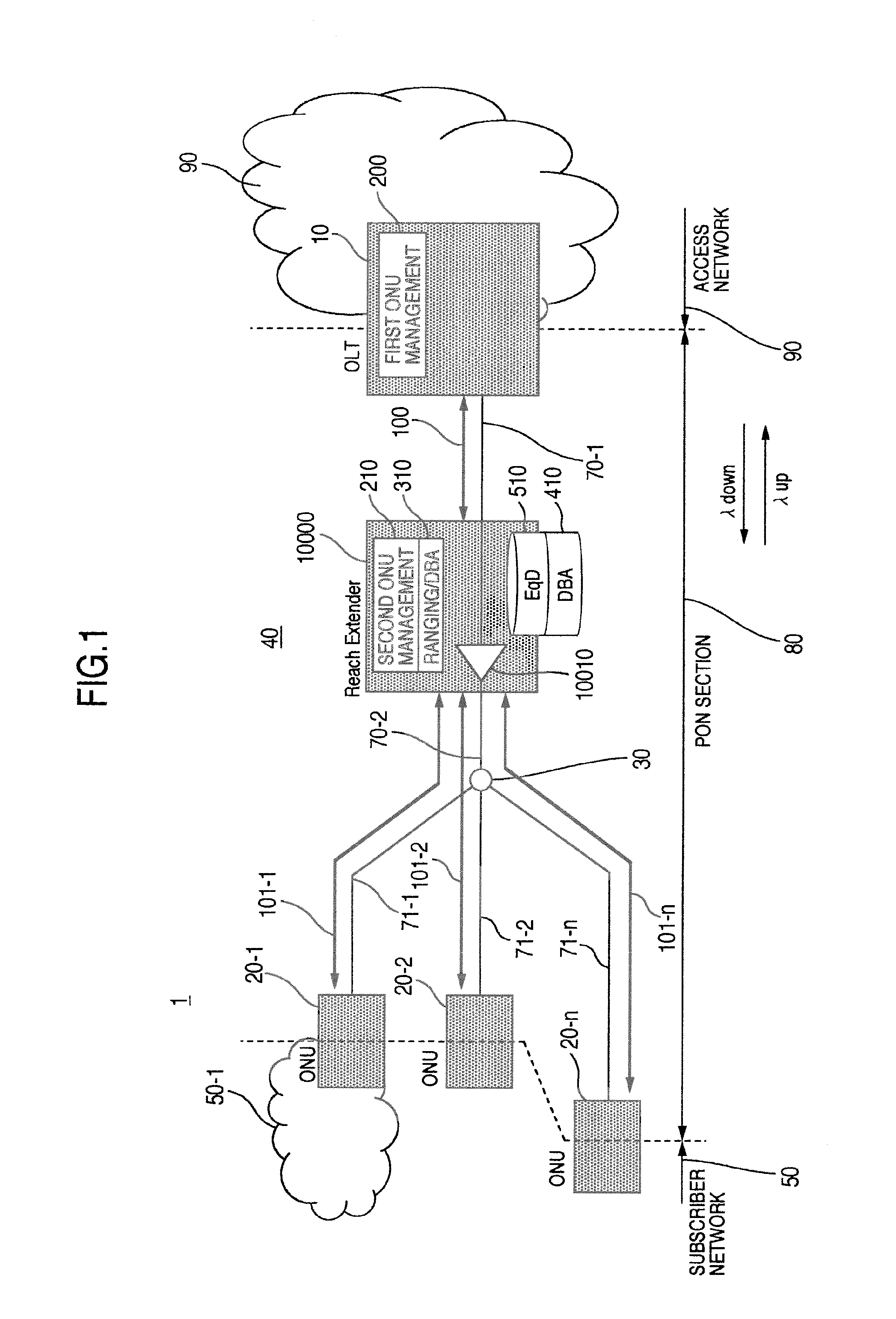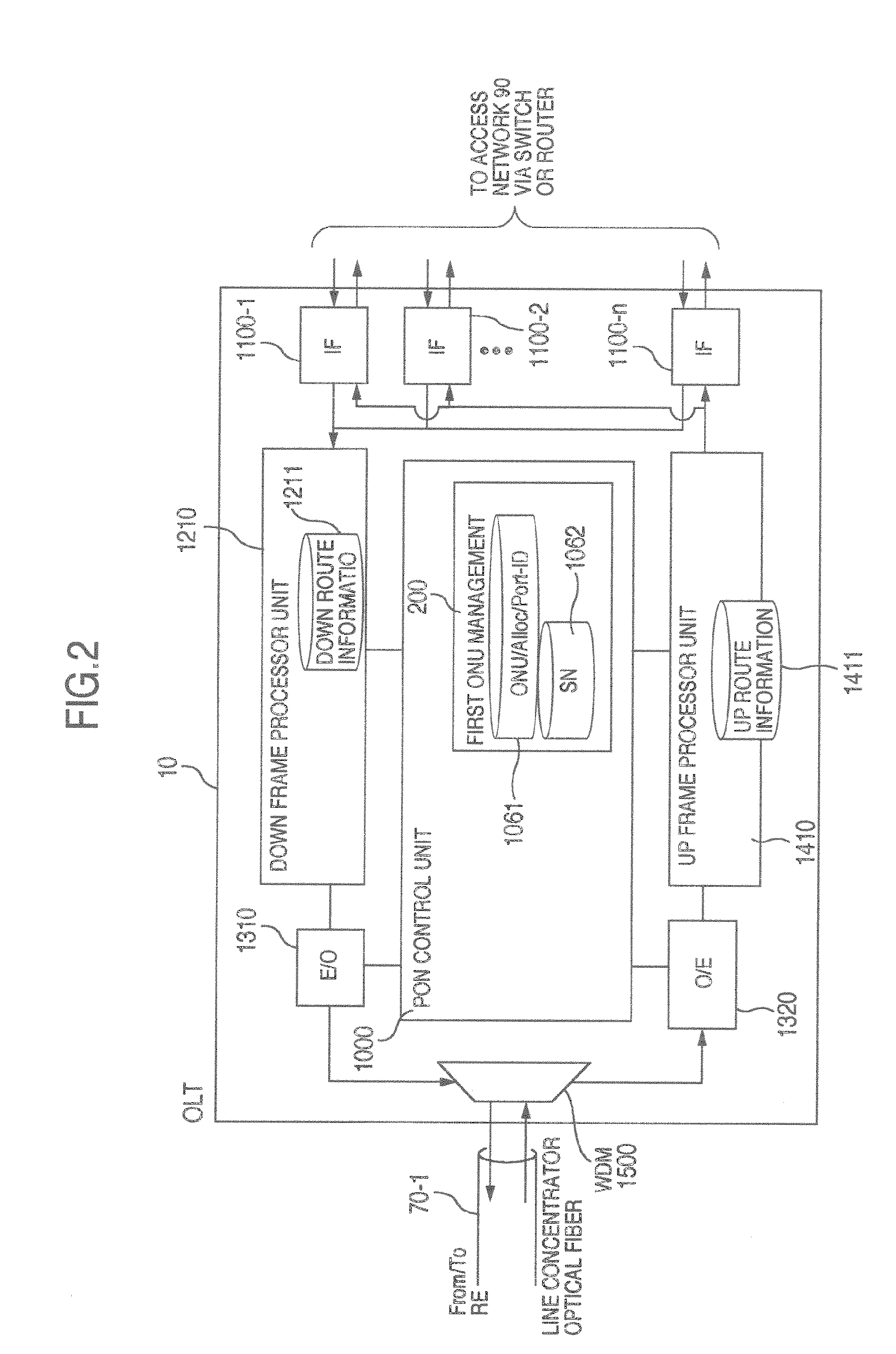Optical passive network system and its operation method
a network system and optical passive technology, applied in the field of optical passive network system configuration, can solve the problems of increasing the cost of new optical fiber installation, limiting the performance of existing pon, and increasing the number of child stations. the effect of cost, increasing the number of child stations, and prolonging the communication distan
- Summary
- Abstract
- Description
- Claims
- Application Information
AI Technical Summary
Benefits of technology
Problems solved by technology
Method used
Image
Examples
Embodiment Construction
[0032]Description will now be made on the configuration and operation of a PON system the present invention with reference to the accompanying drawings, by using as an example the configuration and operation of GPON stipulated by ITU-T Recommendations G984.3.
[0033]FIG. 1 is a diagram illustrating an example of the configuration of an optical access network using PON of the present invention wherein RE is inserted into a line concentrator optical fiber of PON.
[0034]PON 40 is constituted of a station side apparatus (OLT) 10, a plurality of subscriber apparatus (ONUs) 20-1 to 20-n, an optical splitter 30, a line concentrator optical fiber 70, a plurality of branch line optical fibers 71-1 to 71-n, and a signal relay apparatus (RE) 10000 inserted between intermediate lines 70-1 and 70-2 of the line concentrator optical Fiber 70. An optical access network 1 of PON connects each of ONUs 20 (20-1 to 20-n) to a subscriber network (or terminals such as PCs and telephones, only a subscriber n...
PUM
 Login to View More
Login to View More Abstract
Description
Claims
Application Information
 Login to View More
Login to View More - R&D
- Intellectual Property
- Life Sciences
- Materials
- Tech Scout
- Unparalleled Data Quality
- Higher Quality Content
- 60% Fewer Hallucinations
Browse by: Latest US Patents, China's latest patents, Technical Efficacy Thesaurus, Application Domain, Technology Topic, Popular Technical Reports.
© 2025 PatSnap. All rights reserved.Legal|Privacy policy|Modern Slavery Act Transparency Statement|Sitemap|About US| Contact US: help@patsnap.com



